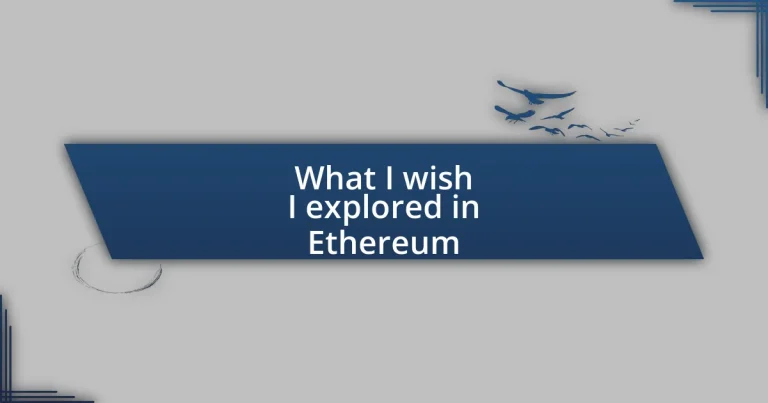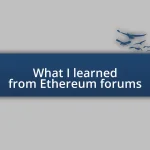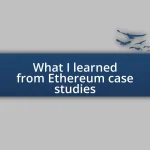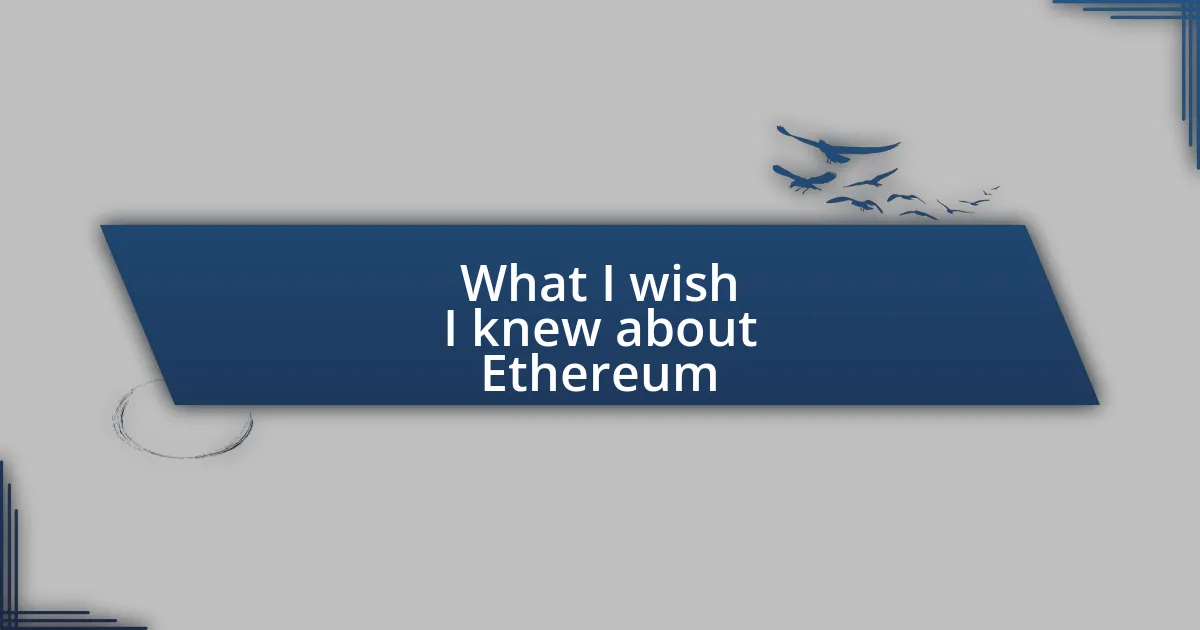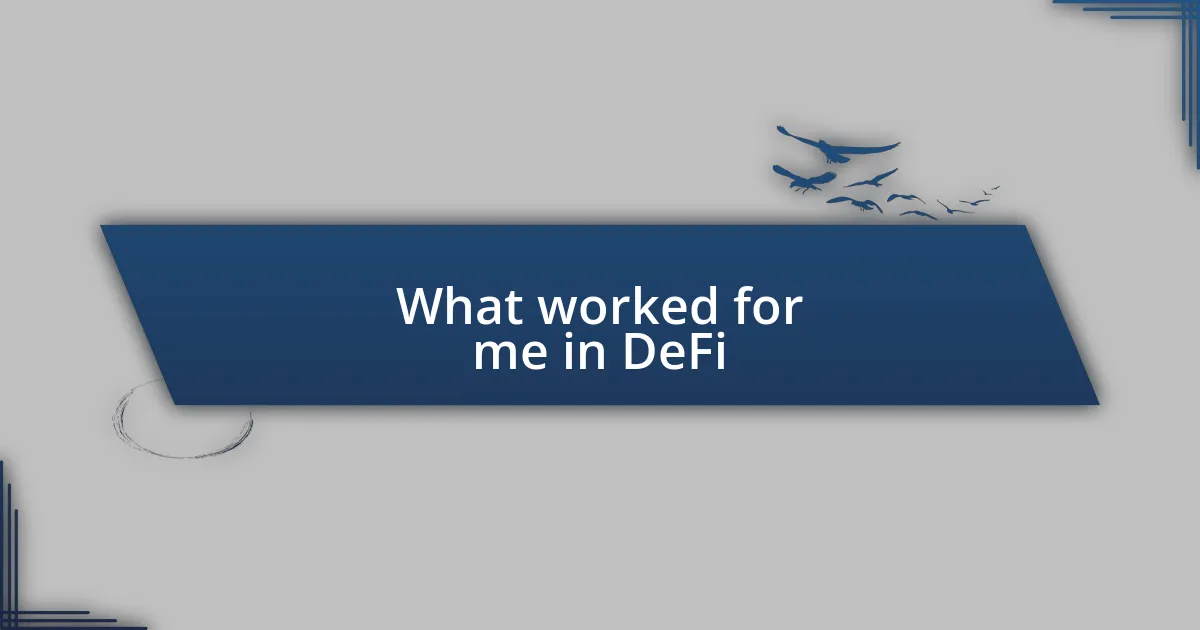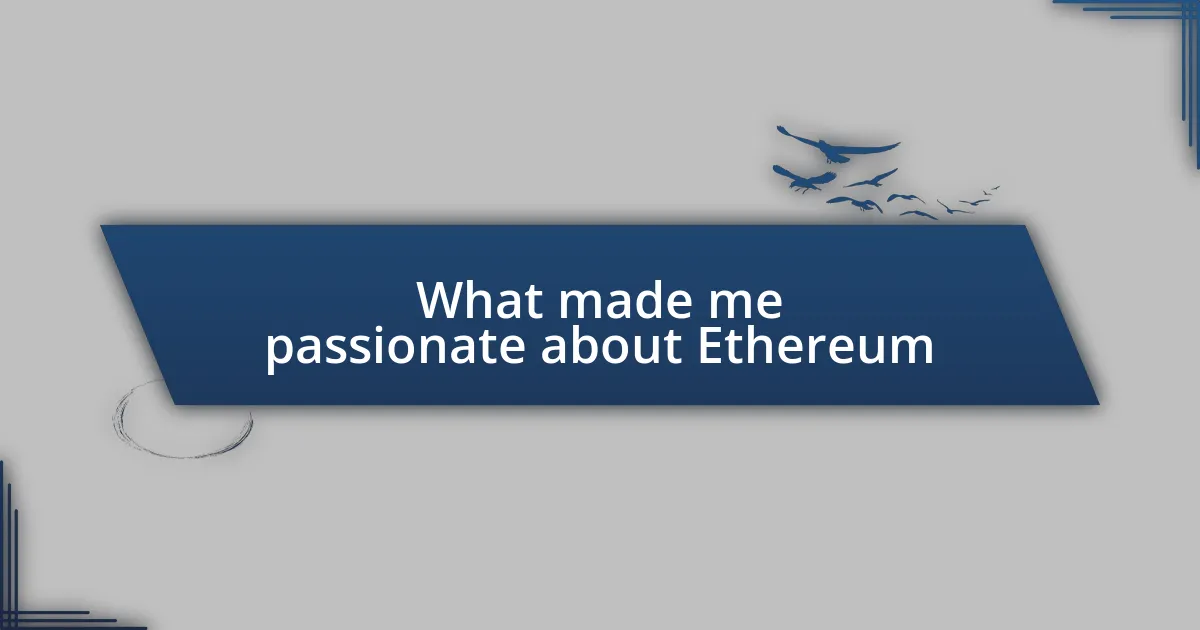Key takeaways:
- Ethereum is a decentralized platform that allows developers to create smart contracts and dApps, enabling automated agreements without intermediaries.
- Smart contracts enhance efficiency and trust by automatically enforcing agreements in a transparent, decentralized environment.
- The Ethereum community fosters collaboration and innovation, with users actively engaging in development and contributing to open-source projects.
- Scalability solutions like Layer 2 and sharding are crucial for Ethereum’s mainstream adoption, improving transaction throughput while maintaining security.
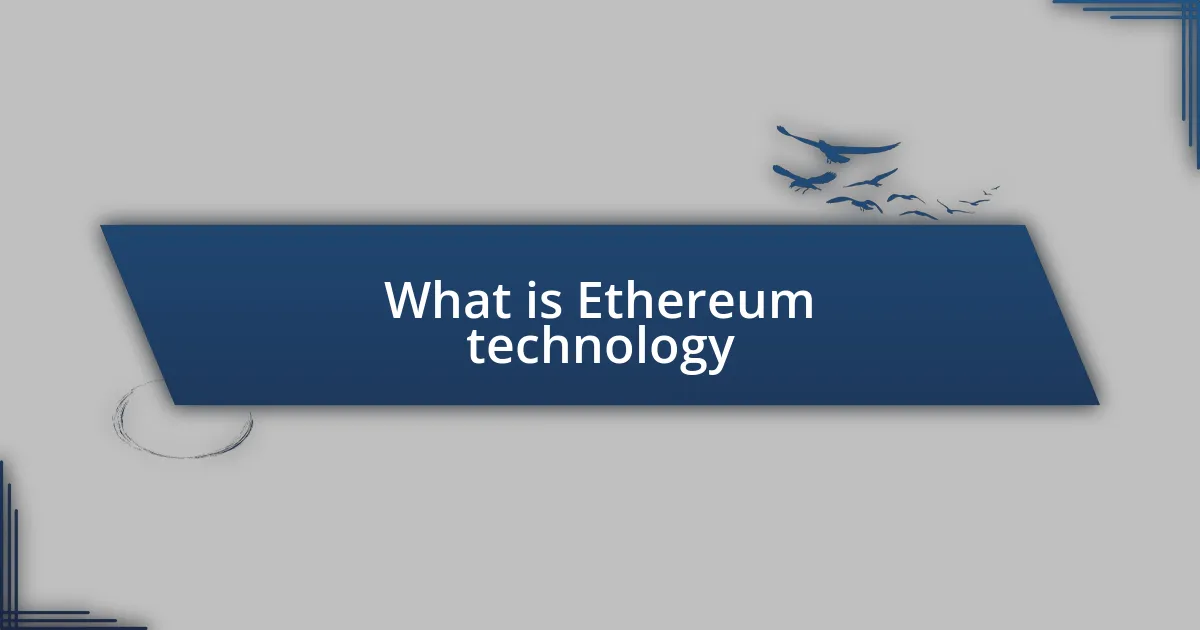
What is Ethereum technology
Ethereum technology is a decentralized platform that enables developers to build and deploy smart contracts and decentralized applications (dApps). When I first encountered Ethereum, I was struck by its potential to revolutionize industries by allowing automated agreements without intermediaries. Can you imagine executing contracts seamlessly, without the need for a middleman like a lawyer or a notary?
At its core, Ethereum utilizes blockchain technology to create a transparent and tamper-proof environment where transactions and agreements are securely recorded. I remember the first time I dived into the intricacies of its consensus mechanism, known as Proof of Stake. I found it fascinating how it not only reduces energy consumption compared to traditional systems but also enhances network security.
What truly captivates me about Ethereum is its vibrant community, which fosters collaboration and innovation. It’s incredible to think about how some of the most creative minds come together to push the boundaries of what’s possible. Have you ever felt the excitement of being part of a movement that could reshape the future?
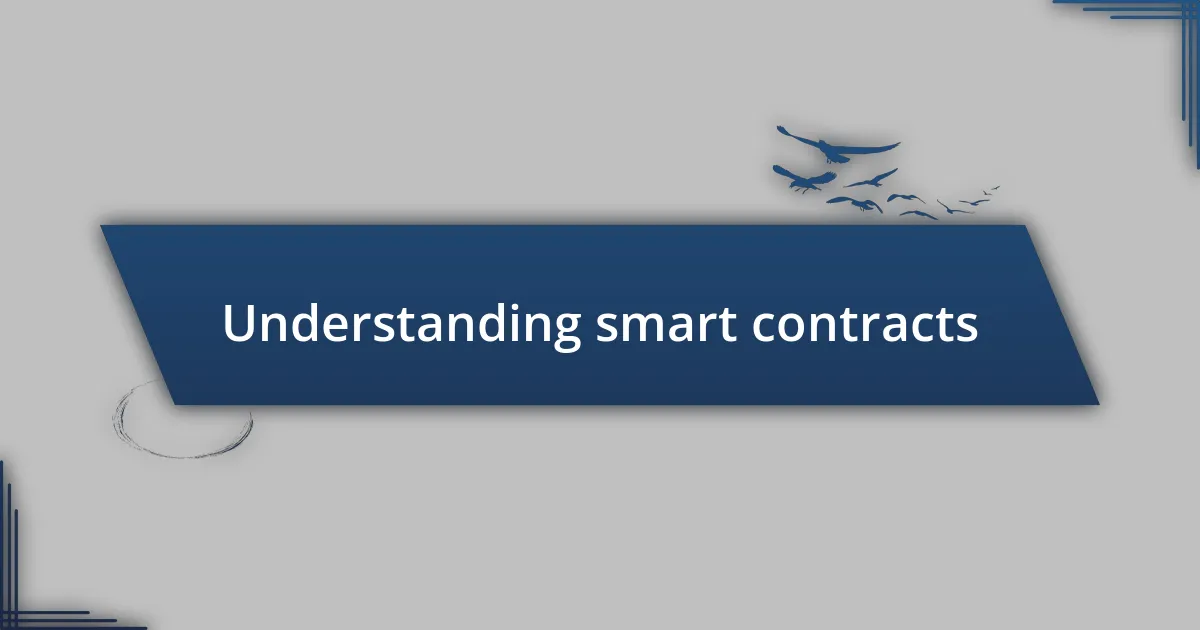
Understanding smart contracts
Smart contracts are one of the most revolutionary features of Ethereum that captured my attention from the very beginning. These self-executing contracts contain the terms of the agreement directly written into code. I recall my initial confusion about how something so abstract could have real-world implications, but as I delved deeper, I realized how they eliminate the need for trust—because the code itself ensures that agreements are enforced automatically.
I find it fascinating how smart contracts allow for unprecedented levels of automation and efficiency. They function like a digital vending machine; once you put in the right inputs, you’re guaranteed to get the output without any human intervention. I once pondered on the implications for industries such as supply chain management. The idea that products could be tracked and verified automatically, without any potential for fraud, made me appreciate the transformative power of Ethereum.
In terms of reliability, smart contracts operate within a decentralized environment, meaning that no single entity controls them. This decentralization fosters security and enhances trust since the executions are transparent and verifiable by all participants in the network. It struck me how this could fundamentally change not just financial transactions but numerous business processes as well. Have you thought about the wide-reaching applications of this technology in your field?
| Feature | Explanation |
|---|---|
| Self-executing | Automatically enforce agreements when conditions are met |
| Transparency | All transactions are visible to participants, enhancing trust |
| Decentralization | No single entity controls the contracts, reducing risks of manipulation |
| Cost-effective | Eliminates intermediaries, thus lowering transaction costs |
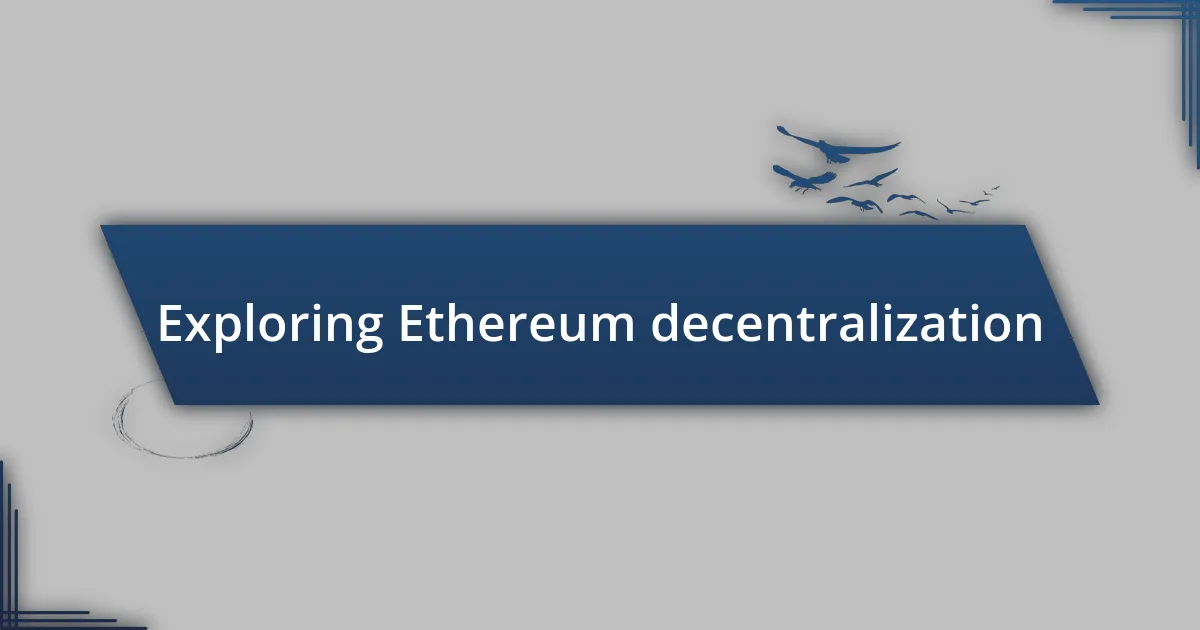
Exploring Ethereum decentralization
The decentralization of Ethereum is something I often reflect on. It’s like the foundation of a vast community where no one person has absolute power. I vividly recall my early days researching Ethereum and being struck by the fact that decisions are made collectively, like a digital town hall meeting where every voice is essential. This structure not only enhances security but also cultivates a sense of trust among users — a refreshing departure from traditional systems dominated by central authorities.
When I first grasped how decentralization works in Ethereum, I was amazed. The implications were visible in my own life, particularly regarding privacy and control over my data. The idea that my information isn’t stored or managed by a corporation was revolutionary. A few key elements stand out:
- User Control: Individuals maintain ownership of their assets and identities, freeing them from centralized control.
- Censorship Resistance: Transactions cannot be easily altered or blocked by any single entity, fostering a fairer environment.
- Increased Security: The distributed nature of the network protects it from attacks, as there’s no single point of failure.
- Community-Driven Development: Innovations and updates are proposed and voted on by users, creating a more inclusive ecosystem.
- Global Accessibility: Anyone with internet access can participate, democratizing opportunities across geographical boundaries.
These aspects make it compelling for anyone seeking not just to understand Ethereum, but to engage with a transformative movement in technology and society.
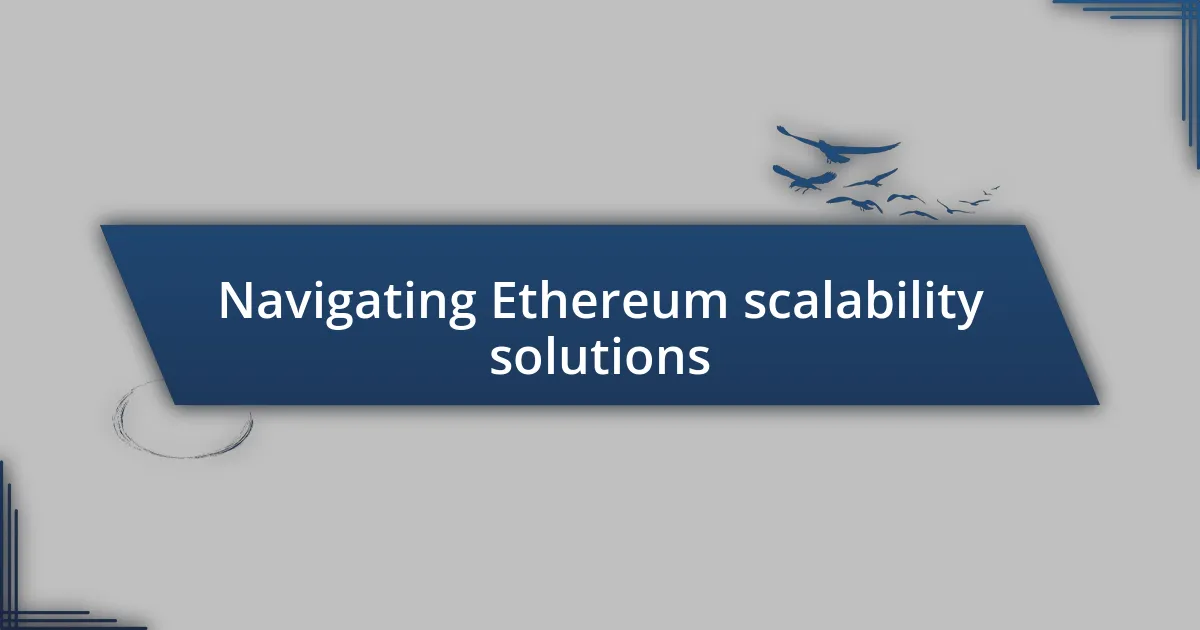
Navigating Ethereum scalability solutions
Navigating the complex world of Ethereum’s scalability solutions can feel overwhelming, but my curiosity led me to explore some of the most promising approaches. I remember the first time I came across Layer 2 solutions, specifically Optimistic Rollups. The potential to substantially increase transaction throughput while still relying on the Ethereum mainnet was fascinating to me. It felt like discovering a shortcut in a maze—a way to keep the core infrastructure while boosting performance.
Then there’s sharding, which struck me as a game changer. When I first read about splitting the Ethereum network into smaller parts that operate independently, I couldn’t help but think about how that mirrors the concept of teamwork. Just like how a group can accomplish more than individuals working alone, sharding allows different “shards” to process transactions simultaneously. Isn’t it incredible to imagine a future where thousands of transactions happen within seconds, all while ensuring security? My mind raced with possibilities.
Each time I dive deeper into the world of scaling solutions, I realize the importance of staying informed about the latest innovations. As someone who’s experienced the frustration of slow transaction times during peak periods, I find compelling reasons to engage with these solutions. Is scalability the key to Ethereum’s mainstream adoption? I believe it could very well be, and my journey through these advancements has made me hopeful about what the future holds.
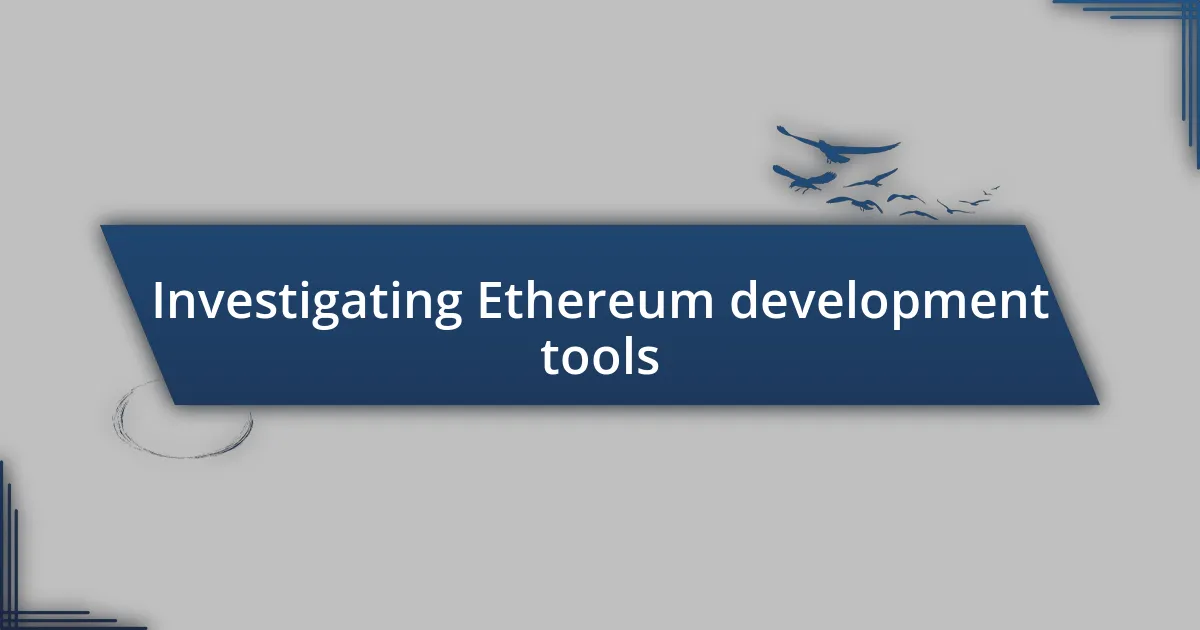
Investigating Ethereum development tools
When I first started exploring Ethereum development, I realized the essential role that development tools play in shaping efficient applications. Tools like Truffle and Hardhat became invaluable allies in my journey. I remember the thrill of setting up my first smart contract using these frameworks—they simplified what seemed like an intimidating process and made it feel achievable. Have you ever had that moment when everything clicks into place? That’s how I felt, and it solidified my passion for Ethereum development.
Then there’s Remix, the online IDE that allows you to write and deploy smart contracts without extensive setup. I recall the late nights I spent tinkering with my code, the satisfaction of seeing my smart contracts go live in a test environment. It’s incredible how Remix’s user-friendly interface helped me experiment and learn in a safe space. The joy of witnessing my own code work correctly for the first time was a milestone I won’t forget.
Exploring libraries like Web3.js and Ethers.js was another eye-opening experience. These libraries allow you to interact with the Ethereum blockchain seamlessly. The first time I integrated Web3.js into my project felt like discovering a new language—I was now equipped to bridge my application with a decentralized world. I can’t help but wonder how many more developers are out there waiting to experience this transformational journey.
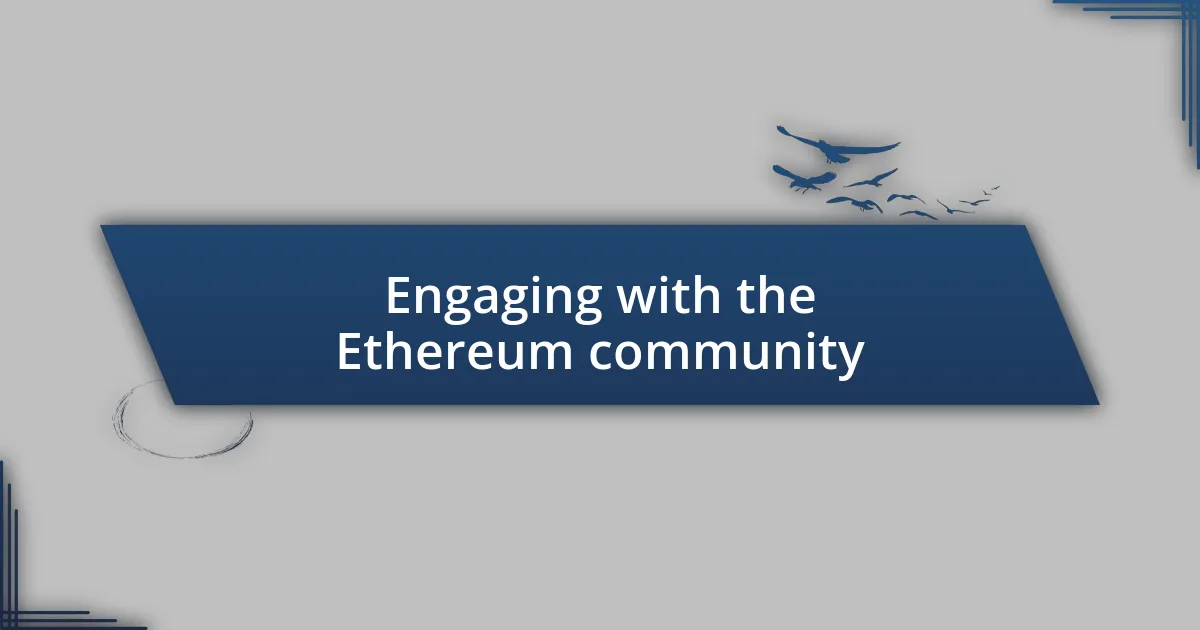
Engaging with the Ethereum community
Connecting with the Ethereum community has been one of the most enriching aspects of my journey. I remember joining a local meetup where I was surrounded by passionate developers and enthusiasts, all eager to share their knowledge. It was inspiring to hear firsthand experiences and ideas that sparked my curiosity—have you ever felt that electric sense of community? That night, I walked away not just with new insights, but with friendships that have lasted throughout my Ethereum exploration.
Social media platforms and forums have also played a significant role in deepening my engagement. I recall the excitement of participating in Twitter Spaces discussions where developers showcased their projects live. Those moments of unfiltered exchange, filled with questions and feedback, reminded me of the collaborative spirit that Ethereum embodies. Each interaction felt like a chance to learn and grow within an ecosystem that thrives on sharing knowledge.
Additionally, contributing to open-source projects has linked me to some truly talented individuals. I once dove into an initiative on GitHub, and while I was anxious initially, connecting with mentors who guided me through the process was transformative. The sense of camaraderie as we worked together towards a common goal felt incredibly gratifying. Have you ever taken that leap into collaboration? Trust me, it opens doors you never knew existed.
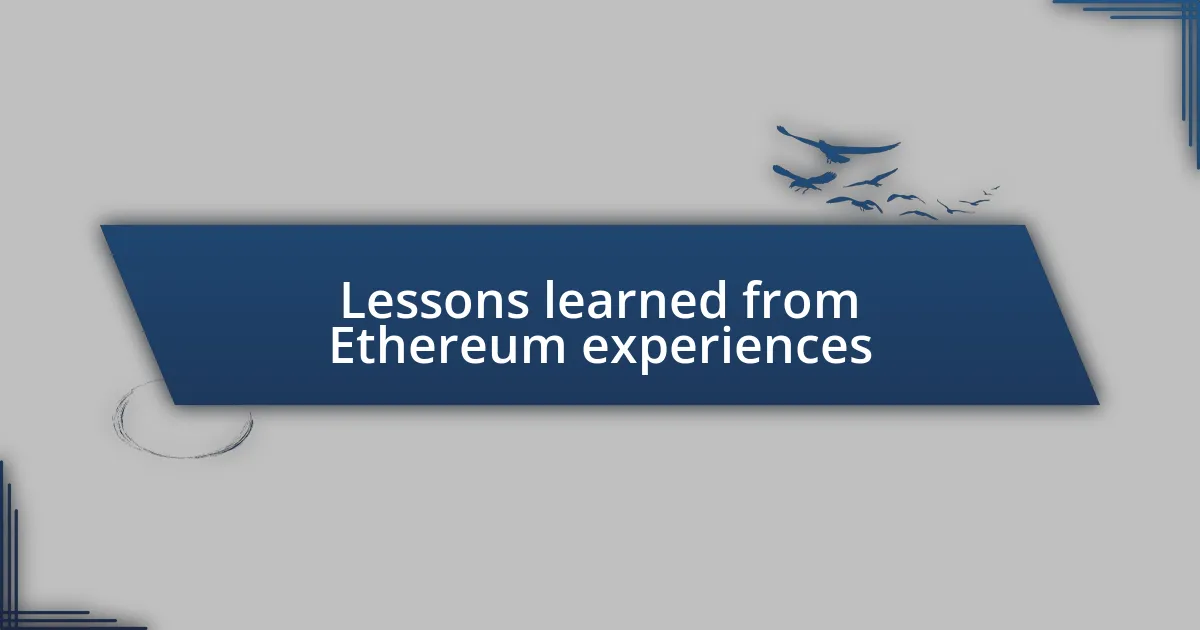
Lessons learned from Ethereum experiences
Diving into Ethereum taught me the immense value of patience and persistence. I vividly recall my first smart contract deployment; the dread of potential mistakes loomed over me. Ultimately, those initial blunders became stepping stones, reinforcing that growth often stems from our missteps. Looking back, wouldn’t you agree that embracing imperfection is crucial in any learning journey?
I’ve also learned the importance of adaptability in an ever-evolving ecosystem. I remember grappling with the shift from Ethereum’s proof-of-work to proof-of-stake. At first, it felt daunting, but immersing myself in resources and discussions about the transition opened my eyes to new possibilities. Have you experienced the exhilarating feeling of adapting to change and emerging stronger?
Lastly, I’ve recognized the power of community support in overcoming challenges. During a particularly complex coding phase, I reached out for help on a decentralized forum. The flood of encouragement and solutions from others not only resolved my issue but made me appreciate the collaborative nature of this space. Isn’t it fascinating how sharing struggles can forge deeper connections and inspire collective growth?

